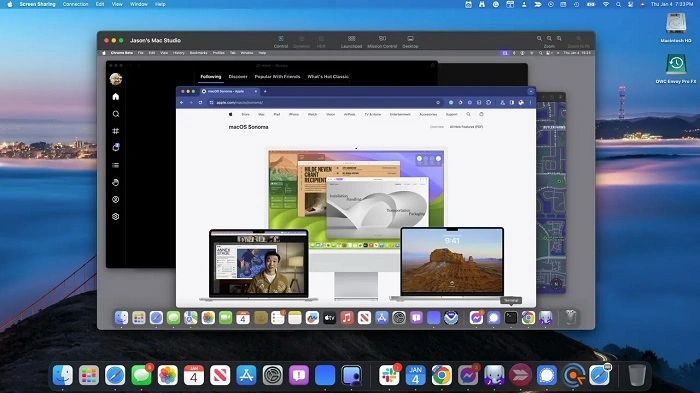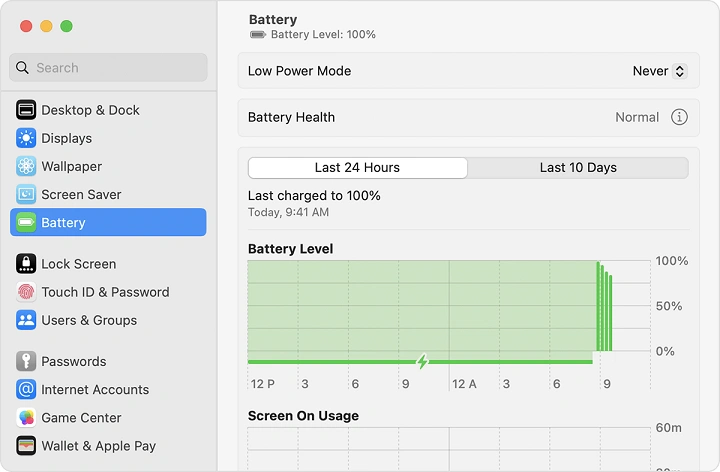In today’s digital age, our laptops are indispensable tools for work, entertainment, and communication. For MacBook users, ensuring the health of your device’s battery is crucial for maintaining peak performance and longevity. In this comprehensive guide, we’ll explore everything you need to know about checking the battery health on your MacBook.
Understanding Battery Health
Before diving into the process of checking your MacBook’s battery health, it’s essential to understand what battery health means. Battery health refers to the overall condition and capacity of your MacBook’s battery. Over time, batteries degrade, leading to a reduction in their ability to hold a charge and power your device effectively.
Why Battery Health Matters

Maintaining optimal battery health is vital for several reasons:
- Performance: A healthy battery ensures consistent and reliable performance from your MacBook.
- Battery Life: Monitoring battery health can help prolong the lifespan of your MacBook’s battery.
- Safety: A degraded battery can pose safety risks, such as swelling or overheating.
Now that we’ve covered the importance of battery health, let’s move on to how you can check it on your MacBook.
Checking Battery Health on macOS
Apple provides built-in tools on macOS that allow you to monitor your MacBook’s battery health. Here’s how to do it:
- Click on the Apple Menu: Located in the top-left corner of your screen, click on the Apple logo to open the menu.
- Select “System Preferences”: From the dropdown menu, choose “System Preferences” to access your system settings.
- Navigate to “Energy Saver”: In the System Preferences window, locate and click on the “Energy Saver” icon.
- Select “Battery” Tab: Within the Energy Saver settings, click on the “Battery” tab to view battery-related information.
- Check Battery Health: Look for the “Battery Health” section, where you’ll find information about your battery’s current condition and maximum capacity.
Interpreting Battery Health Data
When checking your MacBook’s battery health, you’ll encounter two essential metrics:
- Cycle Count: This refers to the number of charge cycles your battery has gone through. Each MacBook battery is designed to withstand a certain number of cycles before its capacity significantly diminishes.
- Maximum Capacity: This indicates the current maximum capacity of your battery compared to its original capacity when new. A higher maximum capacity percentage indicates better battery health.
Optimizing Battery Health

Now that you know how to check your MacBook’s battery health let’s explore some tips for optimizing it:
- Avoid Extreme Temperatures: High temperatures can accelerate battery degradation, so avoid exposing your MacBook to extreme heat.
- Use Battery Saver Mode: macOS includes a Battery Saver mode that conserves power by adjusting system settings. Enable this mode when you need to maximize battery life.
- Calibrate Your Battery: Occasionally calibrating your MacBook’s battery can help ensure accurate battery health readings and improve performance.
- Limit Full Charge Cycles: Try to avoid fully charging your MacBook’s battery regularly. Instead, aim to keep it between 20% and 80% for optimal longevity.
Your MacBook’s battery is a critical component that directly impacts its performance and lifespan. By regularly checking and maintaining battery health, you can ensure that your device continues to serve you well for years to come. Follow the steps outlined in this guide to monitor your MacBook’s battery health effectively and implement best practices for maximizing its longevity. With proper care and attention, you can keep your MacBook running smoothly and reliably.
Advanced Techniques for Battery Health Optimization
In addition to the basic tips mentioned earlier, there are several advanced techniques you can employ to further optimize your MacBook’s battery health.
Manage Background Processes
Background processes and applications can drain your MacBook’s battery without you even realizing it. To conserve battery life and maintain health, regularly review and manage your active applications. You can use the Activity Monitor utility to identify resource-intensive processes and close unnecessary applications running in the background.
Adjust Display Brightness and Settings
The display is one of the most power-hungry components of your MacBook. By adjusting the brightness level and other display settings, you can significantly reduce power consumption and extend battery life. Consider lowering the brightness level when working indoors or in low-light environments and enable features like automatic brightness adjustment to optimize power usage.
Monitor Battery Temperature
Temperature plays a crucial role in battery health and longevity. High temperatures can accelerate battery degradation, while extreme cold can temporarily reduce battery performance. To prevent overheating, ensure proper ventilation and avoid using your MacBook on soft surfaces like beds or couches that can block airflow. Additionally, refrain from leaving your MacBook in direct sunlight or hot environments for extended periods.
Update macOS and Applications

Regular software updates from Apple often include optimizations and fixes that can improve battery efficiency and performance. Keep your MacBook’s operating system and installed applications up to date to benefit from these enhancements. You can enable automatic updates in the System Preferences to ensure you’re always running the latest software version.
Optimize Energy Settings
macOS provides various energy-saving features and settings that can help extend battery life. Experiment with different energy-saving presets or create custom power profiles tailored to your usage patterns. You can adjust settings such as sleep mode, display sleep timing, and hard disk sleep to minimize power consumption during idle periods.
Use Safari for Web Browsing
When it comes to web browsing, the choice of browser can impact battery life significantly. Safari, Apple’s native web browser, is optimized for macOS and tends to be more energy-efficient compared to third-party alternatives like Chrome or Firefox. Consider using Safari for your everyday browsing tasks to conserve battery power and improve overall efficiency.
Reduce Keyboard Backlighting
If your MacBook is equipped with a backlit keyboard, reducing the brightness level or disabling the backlighting altogether can help conserve battery power. While keyboard backlighting adds convenience in low-light conditions, it also consumes additional energy. Adjust the backlight settings based on your preferences and ambient lighting conditions to strike a balance between visibility and battery life.
By implementing these advanced techniques, you can take your battery health optimization efforts to the next level. From managing background processes to fine-tuning energy settings, every adjustment contributes to preserving your MacBook’s battery health and extending its lifespan. Remember to regularly monitor battery health metrics and adjust your usage habits accordingly to ensure optimal performance and longevity for your device. With proper care and attention, you can enjoy reliable performance from your MacBook for years to come.

